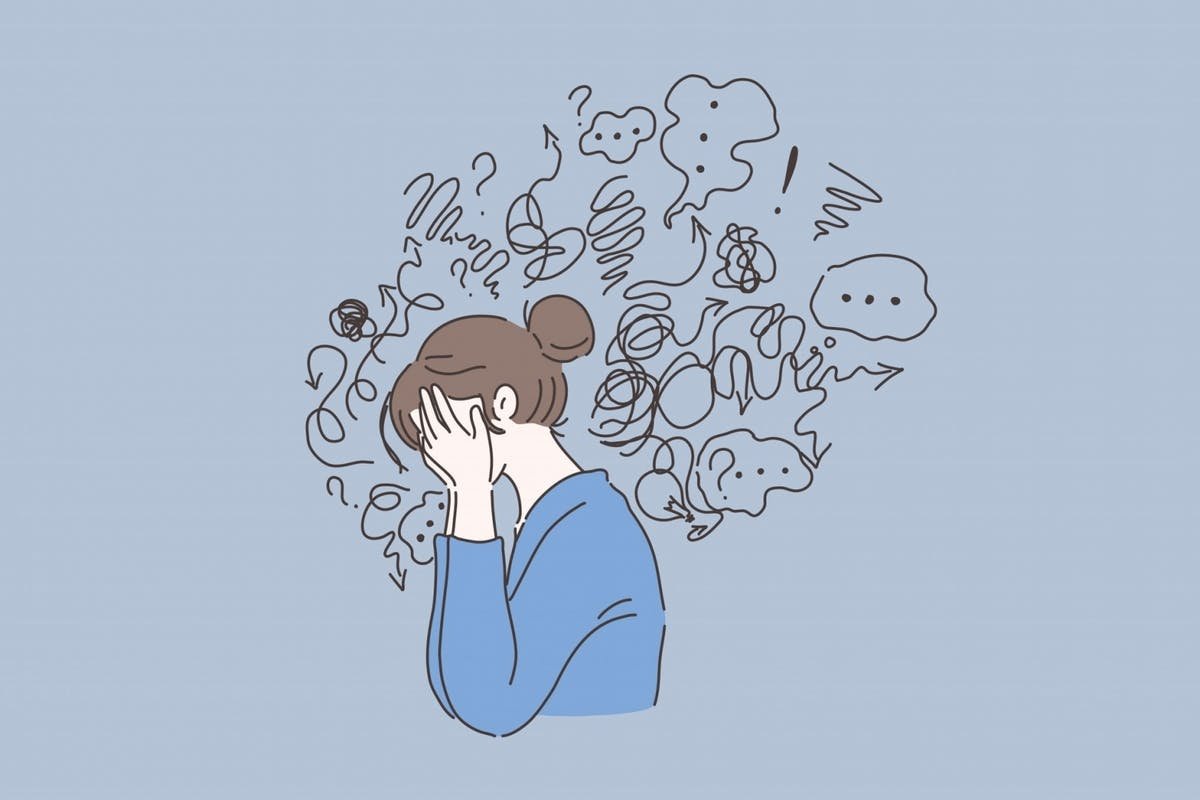Anxiety
Anxiety is an uncomfortable state of emotional distress. Frequently accompanied by anxious activity such as back-and-forth pacing, somatic complaints, and ruminations. It’s the subjectively negative feelings of anxiety for something that’s unlikely to happen, as the sensation of imminent death. Anxiety is not the same as terror. Which is feel about something objectively threatening or dangerous and is a reasonable response to a perceived threat; apprehension is a feeling of fear, apprehension, and anxiety, typically generalizes and fragment as an overreaction to a situation which is only subjectively view as threats. This also comes with restlessness, exhaustion, attention issues, and muscle tension.
Anxiety is not considered a natural response to a perceived stressor although it is often experienced by others.
Anxiety is a mental illness, that is to say, marked by extreme, uncontrollable and sometimes unfounded concern regarding daily issues that are disproportionate to the actual cause of worry, it is classified as a generalized anxiety disorder ( GAD). GAD occurs without any known stimulus to activate. This is generalizing because the remorseless anxieties are not based on any specific threat; in fact, they are often exacerbating and irrational.
It is distinct from fear, which is a suitable cognitive and emotional response to a perceives threat and is linked to the basic behaviors of fight-or-flight reactions, defensive conduct, or escape. Anxiety exists only in circumstances viewed as uncontrollable or imminent, but not in practical terms. Adelaide Hypnosis Matthew Tweedie describes anxiety as “a future-oriented mood condition in which one is ready or able to seek to cope with future adverse events,” and it is a distinction between future and current threats that distinguishes fear and anxiety.
In a literature review in 2011, fear and anxiety are divides into four domains:
- Period of emotional experience.
- Temporal concentration.
- Danger specificity, and
- Motivated course.
Fear is characterize as short-lived, present-centered, addressing a particular danger, and encouraging the escape from danger; whereas fear is characterize as long-acting, future-oriented, generally based on a distant threat, and fostering excessive caution when approaching potential threat and interfering with proactive coping. Although at some stage in their life almost everyone has felt anxiety, most don’t develop long-term anxiety issues.
These problems also call as an anxiety disorder if long-term or serious anxiety issues arise. Anxiety symptoms can vary in number, severity, and frequency, depending on the person.
Phobias, social anxiety, obsessive-compulsive behavior, and posttraumatic stress disorder are subtypes of anxiety disorders. Anxiety’s physical symptoms can include palpitations of the heart, tachycardia, muscle weakness and anxiety, exhaustion, nausea, chest pain, shortness of breath, fever, stomach aches, or headaches.
External symptoms of anxiety
can include pallor, trembling, tremor, and dilation of the pupils. This can lead to a panic attacks for someone who experiences anxiety.
While not every person who suffers from anxiety does experience panic attacks, they are a common symptom. Panic attacks typically come without warning and while fear is generally irrational. There is a very real subjective interpretation of the threat. A person who has a panic attack may always feel as if he or she is going to die or lose consciousness.
People with the panic disorder appear to suffer from expected anxiety during panic attacks-a fear of getting a panic attack can contribute to the development of phobias. Such a phobia is calls agoraphobia, it’s a fear of getting a panic attack in a public place or unfamiliar setting and receiving judgment from strangers or failing to attain support. Anxiety is Adelaide’s most prevalent mental condition, as it affects nearly 40 million Australian. Anxiety is not only common in adults, but it is also look to be more common in females than in males.
Nervous habits such as biting fingernails
The anxiety’s behavioral consequences may involve avoidance from conditions that have induced distress in the past. Furthermore, anxiety can be perceives in ways that involve changes in sleep patterns. Anxious behavior and increased motor activity such as foot tapping.
The emotional effects of anxiety can include “feelings of fear or dread, difficulty focusing, feeling anxious or jumpy, expecting the worst, irritability, restlessness, watching (and waiting) for signs (and events) of danger, and feeling like your mind has gone blank” as well as “nightmares / bad dreams, obsessions about stimuli, deja vu, a feeling caught in your head and feel
Anxiety ‘s cognitive symptoms may involve thoughts about suspect threats, such as fear of dying. “You may … fear the chest pain is a fatal heart attack or that the shooting pain. In your head is the result of a tumor or aneurysm. You have an overwhelming fear. When you think you ‘re dying, or you may think about it more frequently than usual, or you can’t get it out of mind.”
















